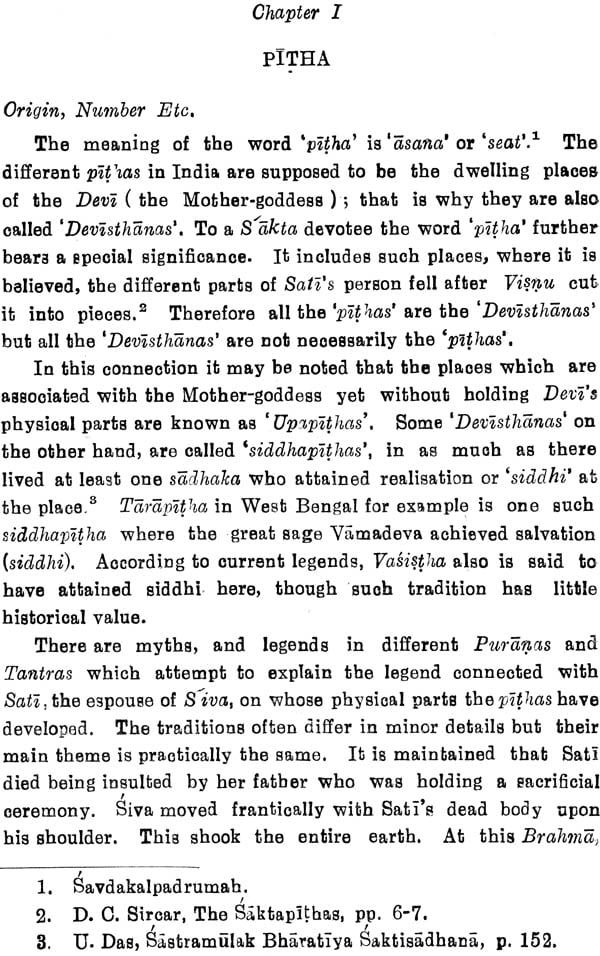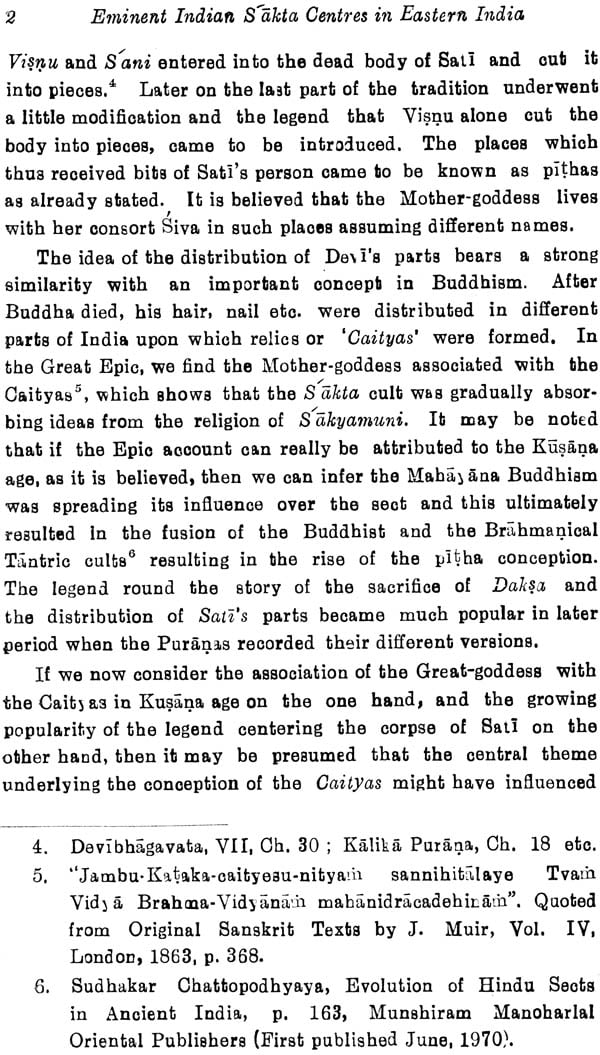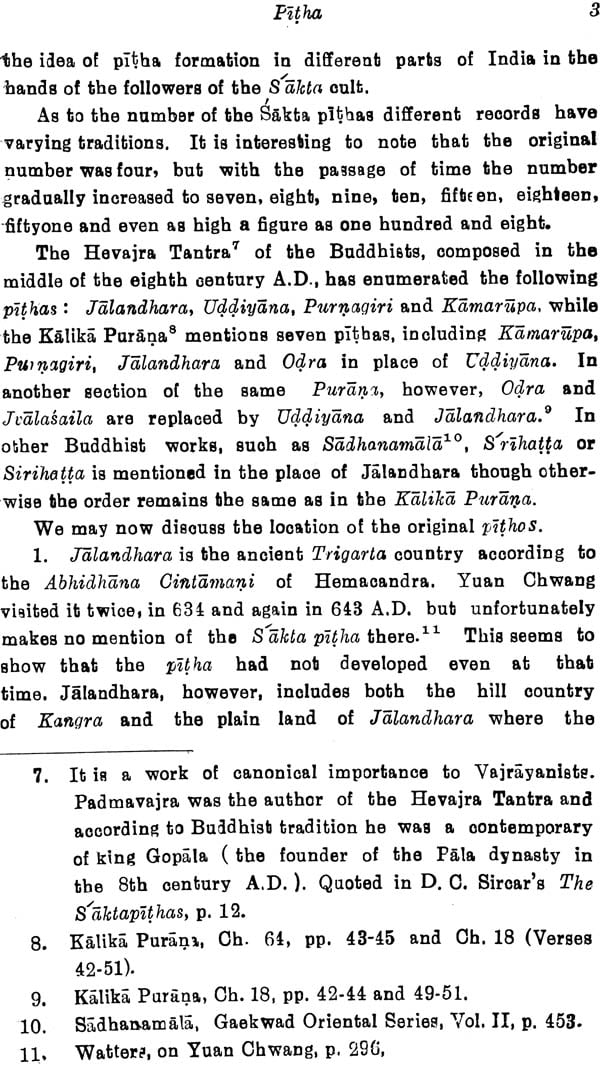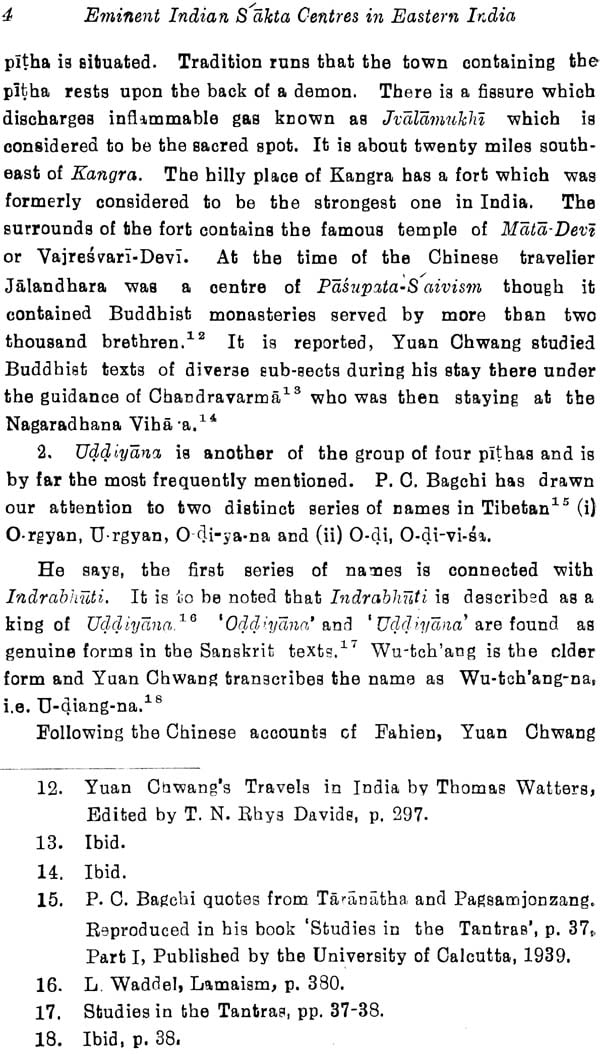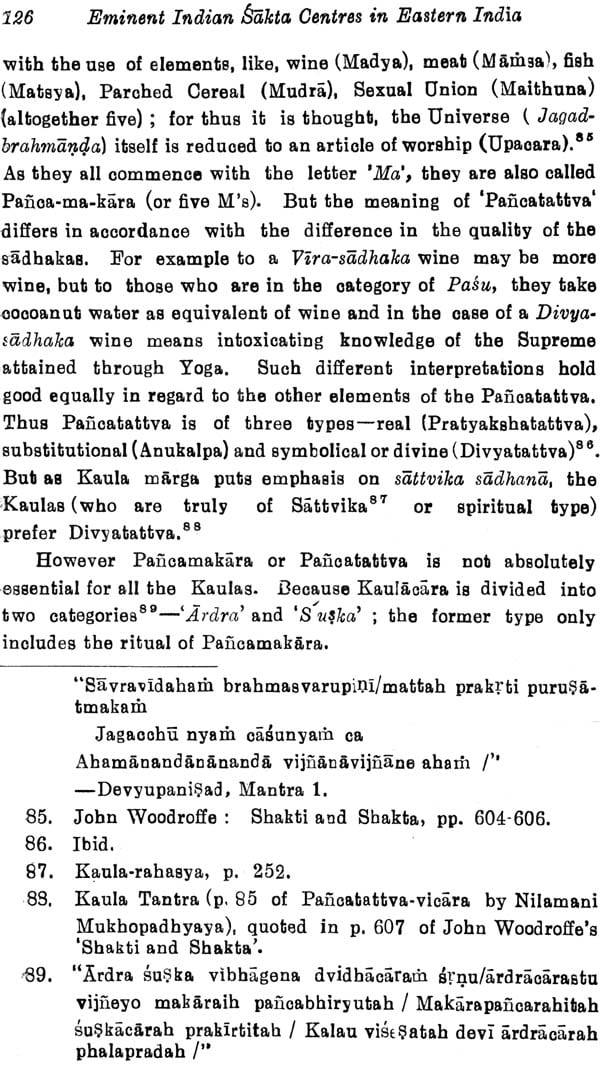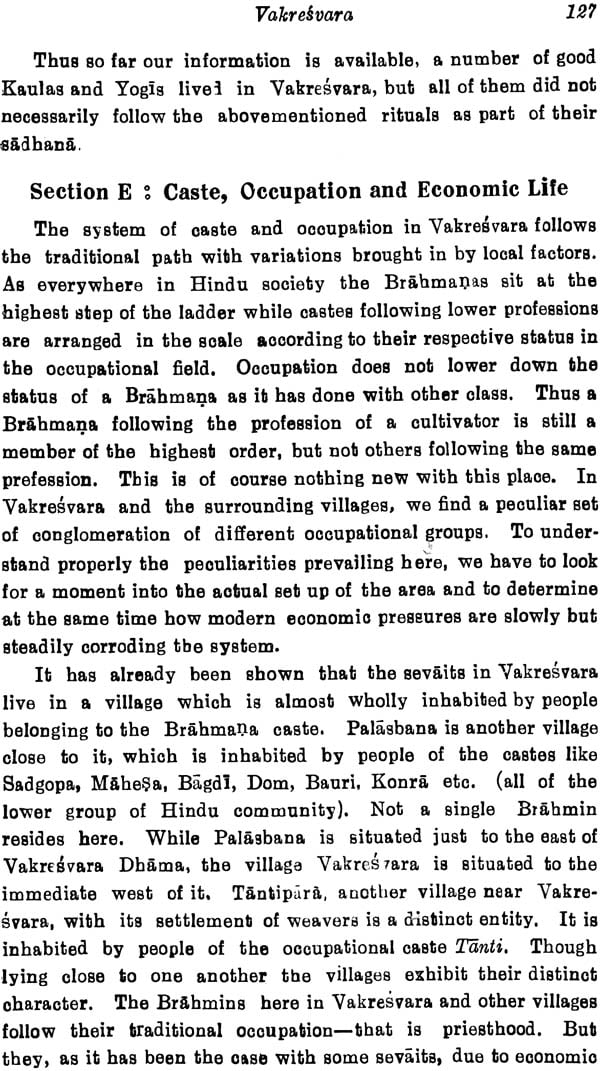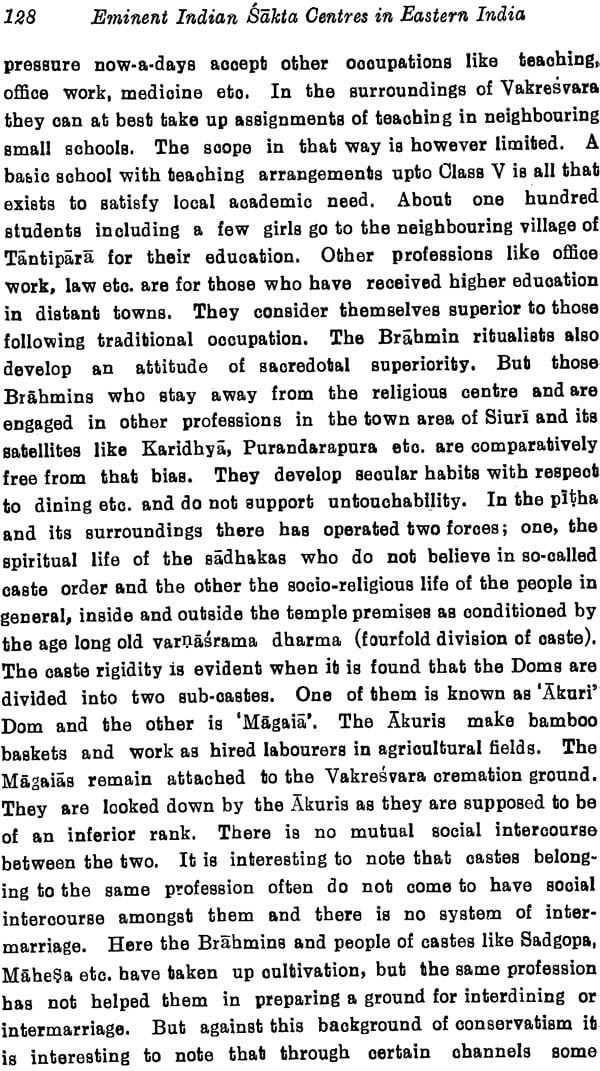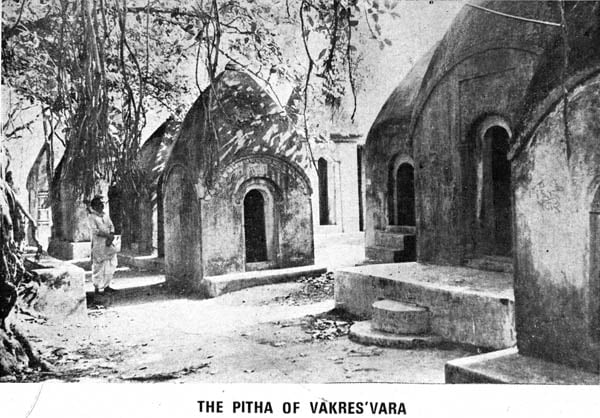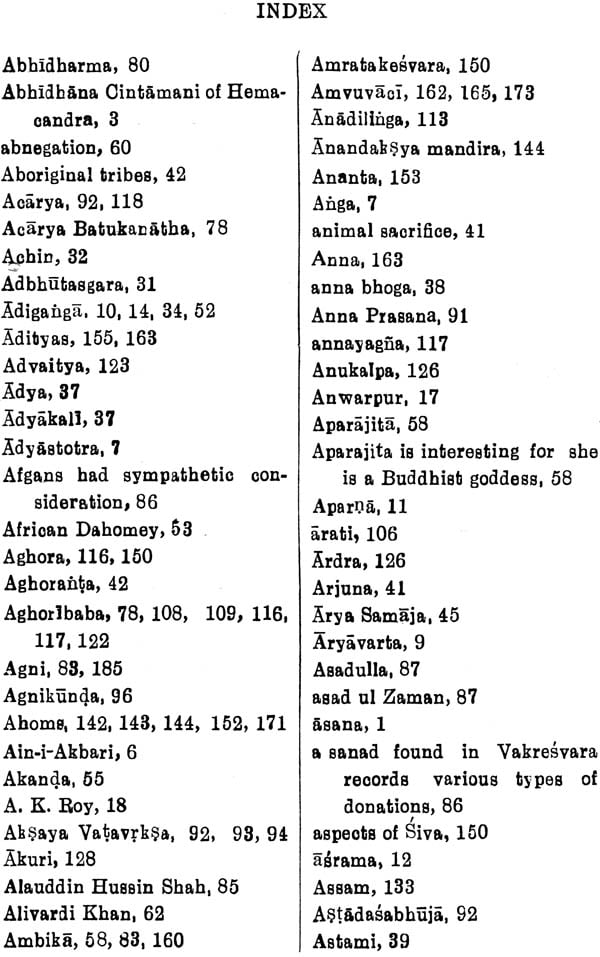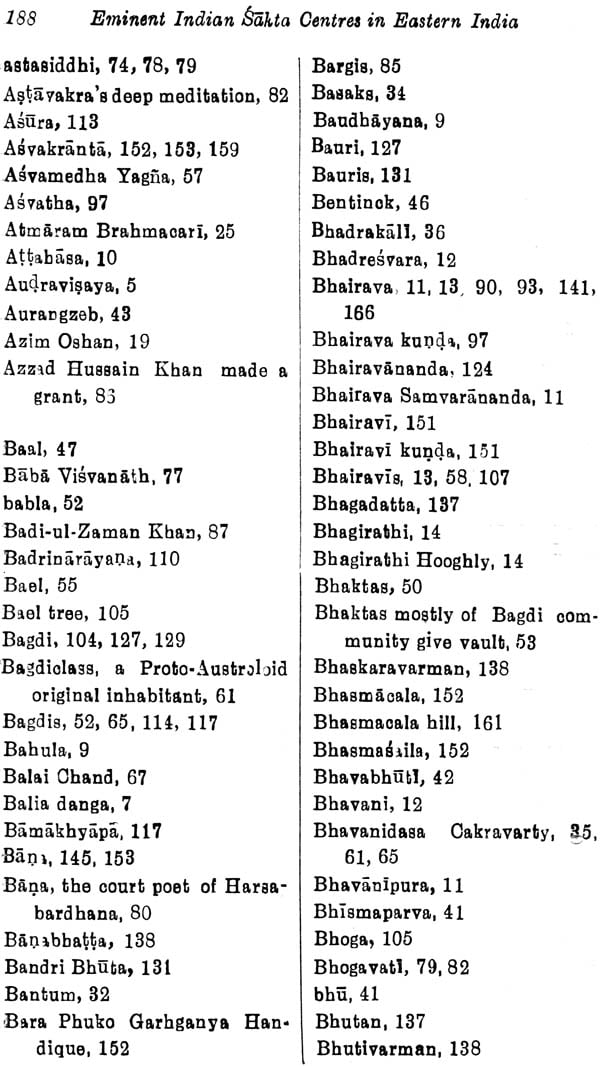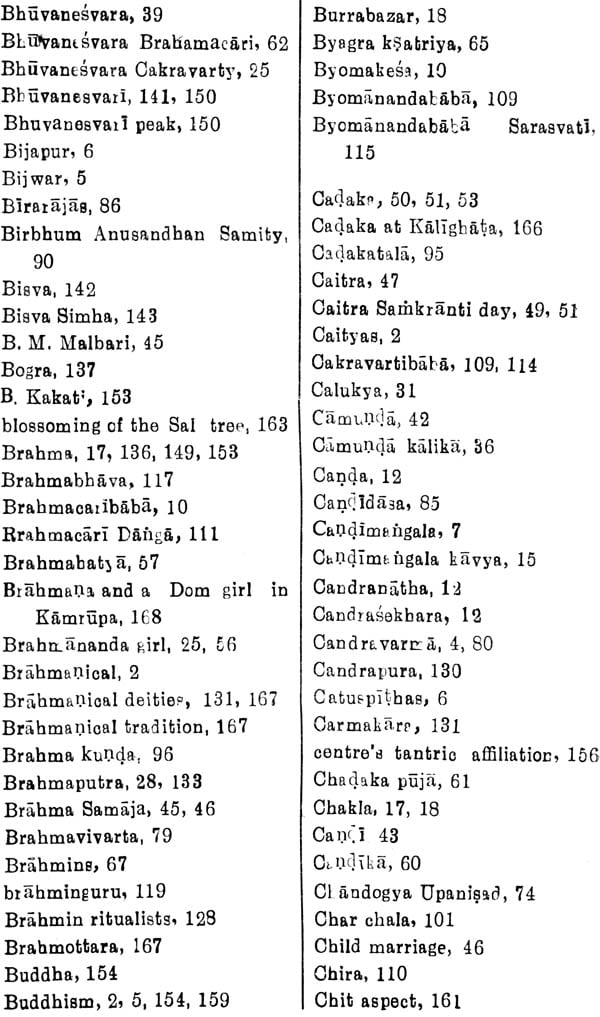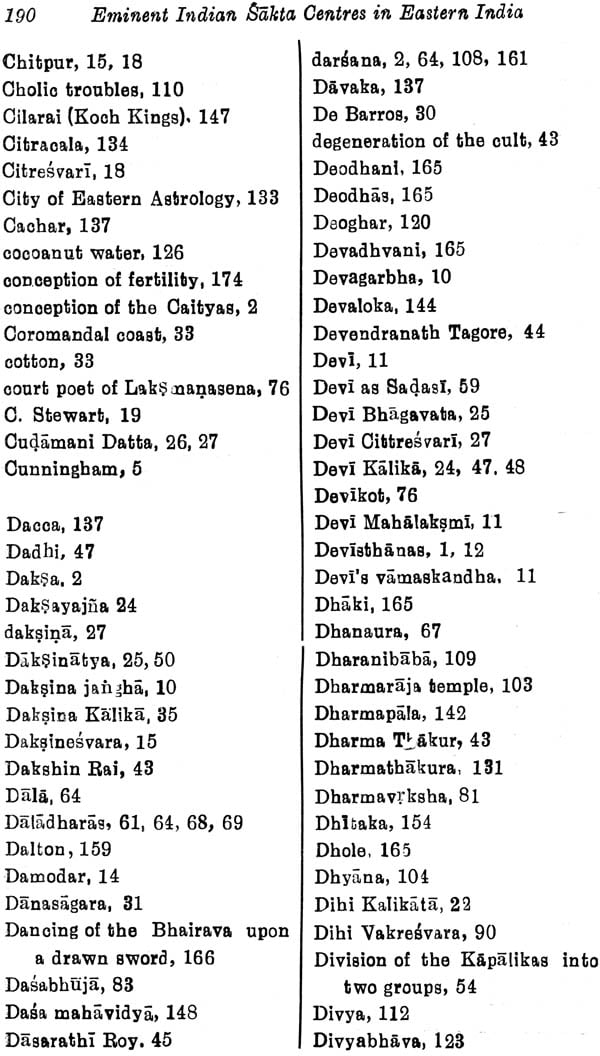
Eminent Indian Sakta Centres In Eastern India (An Interdisciplinary Study In The Background of The Pithas of Kalighata, Vakresvara And Kamakhya) (An Old and Rare Book)
Book Specification
| Item Code: | NAG354 |
| Author: | Dr. Subhendugopal Bagchi |
| Publisher: | PUNTHI PUSTAK |
| Language: | English |
| Edition: | 1980 |
| Pages: | 222 |
| Cover: | Hardcover |
| Other Details | 8.5 inch X 5.5 inch |
| Weight | 340 gm |
Book Description
Historical studies on pithas generally tend to take the form of more compilation of references to them. And yet pithas and tirthas are known to have performed crucial social and cultural roles in as much they were not only religious centres attracting pilgrims from distant regions but were also centres which developed ritual and social norms. This study by Dr. Subhendugopal Bagchi which focuses on three major Sakta pithas of Estern India : Kalighata, Vakres-vara and Kamakhya, not only examines the historical processes through which these religious sits developed as major Sakta centres, but also attempts to analyse how they represent their distinct types of cultural milieu : tribul, rural and urban. This study is, by its very nature, an interdisciplinary undertaking combining analysis of historical data with that of material obtained through intensive field work.
Dr. Subhendugopal Bagchi presently a faculty member of Ancient India History Culture and Archaeology in Tagore’s Visva-Bharati University has been researching on this theme for several years past. A disciple of the eminent social thinker Late Professor Nirmal Kumar Bose who initiated him in studies of cultural and social anthropo-geography, Dr. Bagchi subsequently added a new dimension to his interdisciplinary investigation by including tools of indological methodology at the instance of Late Professor Sudhakar Chattotopadhyaya, the renowned Indologist.
This study in print claims originally in judicious synthesising of historical information and field observation which a scholar of his orientation is preminently capable of performing.
Dr. Subhendu Gopal Bagehi came to the field .of Ancient Indian History with initial training in Human Geography. After he joined Visva-Bharati at Santiniketan the existence of a number of Sakta Pithas in the surrounding regions attracted, his attention. He undertook a systematic field study of Vakre- svar Pitha combining the approaches of human geography, anthropological field study and textual analysis. Later on, at the suggestion of Prof. Sudhakar Chattopadhyaya he undertook comparative multi-dimensional studies of two other important Sakta Pithas of Eastern India. These three Pithas selected for comparative study exist in three distinct situations: Vakresvar inrural, Varna-Jati based social region, Kalighat in a major modern metropolis, and Kamakshya at the eastern frontier of Indian civilization having an important component of tribal cultural base.
At Vakresvar Dr. Bagchi has brought into relief the interaction between the esoteric culture of the "Dham" the pilgrim centre, and the life ways of the laity at the gram, Vakresvar. We gain an understanding of the interplay between the asoetic tradition which transcends the Verna-Jati order and the caste based social order of the immediate surrounding regions. The Sevayats mediate between the world of the sacred mystique ideally represented by Sadhakas like Guha Baba and the laity. All the three Pithas while accommodating the Varna-Jati order also provide a sacred social sanction for transcending the constraints of .he caste system. In all the three centres the basis for the persistence of the sacred complex lie very largely in the vested interest and skiIl of the Sevayats and Pandas in communicating the mystiques at these sacred centres through lores and their embellishment. But the presence of Sudhakas, who are believed to be genuinely involved in transcendental and occult pursuits, also contribute to the perpetuation of the mystique of these sacred centres. The Pithas continue to thrive as long as the sacred specialists are able to communicate the myth of Tirtha-mahatmya to the pilgrims and as long as there are beliefs among 'he pilgrims that there are genuine Sadhakas in these Pithas who are deeply and ably engaged in transcendental pursuits. As in any creative and artistic endeavour there are grammars and ends, the ascetic orders of India, over the years. have perfected their grammars and goals of pursuits. It is indeed very difficult for the non-initiate to enter into this realm. Yet if this esoteric world be the subject of enquiry the researcher has no other alternative than to follow the pursuits in their own self-defined terms with a feel for these endeavours.
While starting from a matter of fact presentation of socio-economic and cultural facts Dr. Bagchi carries us to the threshhold of the world of the sadhaka. . I recommend this book for wide circulation among interested scholars as pioneering effort in studying some sacred centres of India, combining the approaches of many disciplines. I hope this important preliminary exercise will encourage others to carry this exercise in multi-dimensional approach to a higher level of perfection.
This book is a product of continuous research and thinking over a period of some years under the inspiring :guidance of revered Professor Dr. Sudhakar Chattopadhyay, Ex-Head of the Department of Ancient Indian History, Culture & Archaeology, Visva-Bharati, and under him I had registered for my Doctorate. I pay obeisance to him. I also record my deep debt of gratitude to the Vice-Chancellor of the Visva-Bbarati, Dr. S C. Sinha, for kindly contributing the learned foreword.
I wish to express my sincere thanks to late Sj. Jiban Choudhury, the cone time Adbyapaka in the Dept. of English and European Languages, Visva-Bbarati, Dr. Sudhin Chakrabarty, Reader, Visva-Bbarati (retired), Sj. Santosh Bose, Senior Lecturer in the Dept. cf History, Visva-Bharati, and to Sj. Sunil Krishna Mookherjee, Adhyapaka in English, Bolpur College for their helpful criticism and occasionsal references. To Sj. Sadasiv Chakrabarty, Sj. Jaykrishnl Maharatna and Sj. Kanai Mookherjee (Purnea) I am specially obliged for all posssible help even cut of turn.
Dr. Sibaram Bhattacharyya, Reader in Geography, C.U. has placed me in a position of debt by taking time off from his busy schedule and drawing out a locational map of the relevant pithas. I extend my thanks to my brother colleague Sj. Arun Nag of the Dept. of A.I.H.C. & A., Visva-Bharati for his kindly taking a photograph for me from the pitha Vakresvara, inserted in the book.
I shall be failing in my duty if I do not express my deep gratitude to Prof. K. Bagchi who also happens to be my elder brother to whom I owe immeasurably for enriching the academic canvas needed for this kind of undertaking.
To my wife Mallika and my son Amit, who spent their days with me in the pithas, the publication of this book will be tremendously rewarding keeping in view the inconvenience they suffered.
My thanks are due to Sj, Shankar Bhattacharya, Proprietor Punthi Pustak, Calcutta, for his kindly publishing the book.
An attempt has been made in the opening ohapter to trace the evolution of the eastern pithas and thon in the subsequent ohapters an anthropological, geographical and historical study has been undertaken of the three pithas of Kallghata (situated in the pre-dominantly urban area of Caloutta), Vakresvara (Iocated in a typical rural setting in the district of Birbhum) and Kamakhya in Kamarupa, Assam dominated by tribal culture and folk traditions. As other pithas show characteristics resembling With either of the above three, hence a oritical study of these pithas will give us a clear picture of the Sakta religious centres of Eastern India. As is often the case, in an anthro- pological cum historical cum geographical dissertation like the present one, materials have been. chiefly collected from my tour of the pithas for a number of times as well as from scriptures, published modern works. gazetters, survey-reports, hand-books, literary works of local writers like the 'Vakresvara Mahatmya' and Assom Buranjis (which are not always available in standard libraries) etc.
It may be mentioned in this connection that, when required, I stayed in a pithasthana for days together and made contact with people of various socio-economic strata-the elites, the common men and women of various caste groups and professions, Attempt has also been made to get an idea of the time perspective of the main events in and around the pithas and to relate these to the larger history of the country.
Chapter I has been devoted to a brief study of the concept of 'pitha' and its distribution throughout the eastern part of the country. Chapter II, III and IV (each incorporating a number of sections) deal with the pithas of Kalighata, Vakresvara and Kamakhya respectively, while Chapter V may be regarded as an epilogue to my study.
While dealing with the pithas main emphasis has been. given on the following topics, with necessary variations to suit particular centre :
(a) The geography and history of the site,
(b) the centre itself,
(c) the rituals,
(d) the ritualists,
(e) Soeio-economic condition of the locality influencing the religious life of the pitha and vice versa.
| CHAPTER-I: PITHA | 1 | |
| CHAPTER-II: KALlGHATA | ||
| Section A: The Site and its History | 14 | |
| Section B: Centres | 34 | |
| Section C: The Rituals | 38 | |
| Section D: The Ritualists | 61 | |
| Section E: Socio-Economio Condition | 66 | |
| CHAPTER-III: VAKRESVARA | ||
| Section A: Location and History. | 73 | |
| Section B: Temple Sites | 90 | |
| Section C: The Rituals | 104 | |
| Section D: Spiritual Specialists | 104 | |
| Section E: Caste, Occupation and Economio Life | 127 | |
| Section F: SiurI-Vakresvara Complex | 130 | |
| CHAPTER-IV: KAMAKHYA | ||
| Section A: Location and History | 133 | |
| Section B: Temple Sites | 144 | |
| Section C: Aspects of Goddess Kamakhya | 159 | |
| Section D: Festivals | 165 | |
| Section E: Social Life with Emphasis on Marriage and Caste-Organisation | 167 | |
| CHAPTER- V: CONCLUSION | 172 | |
| BIBLIOGRAPHY | 175 | |
| INDEX | 187 |
